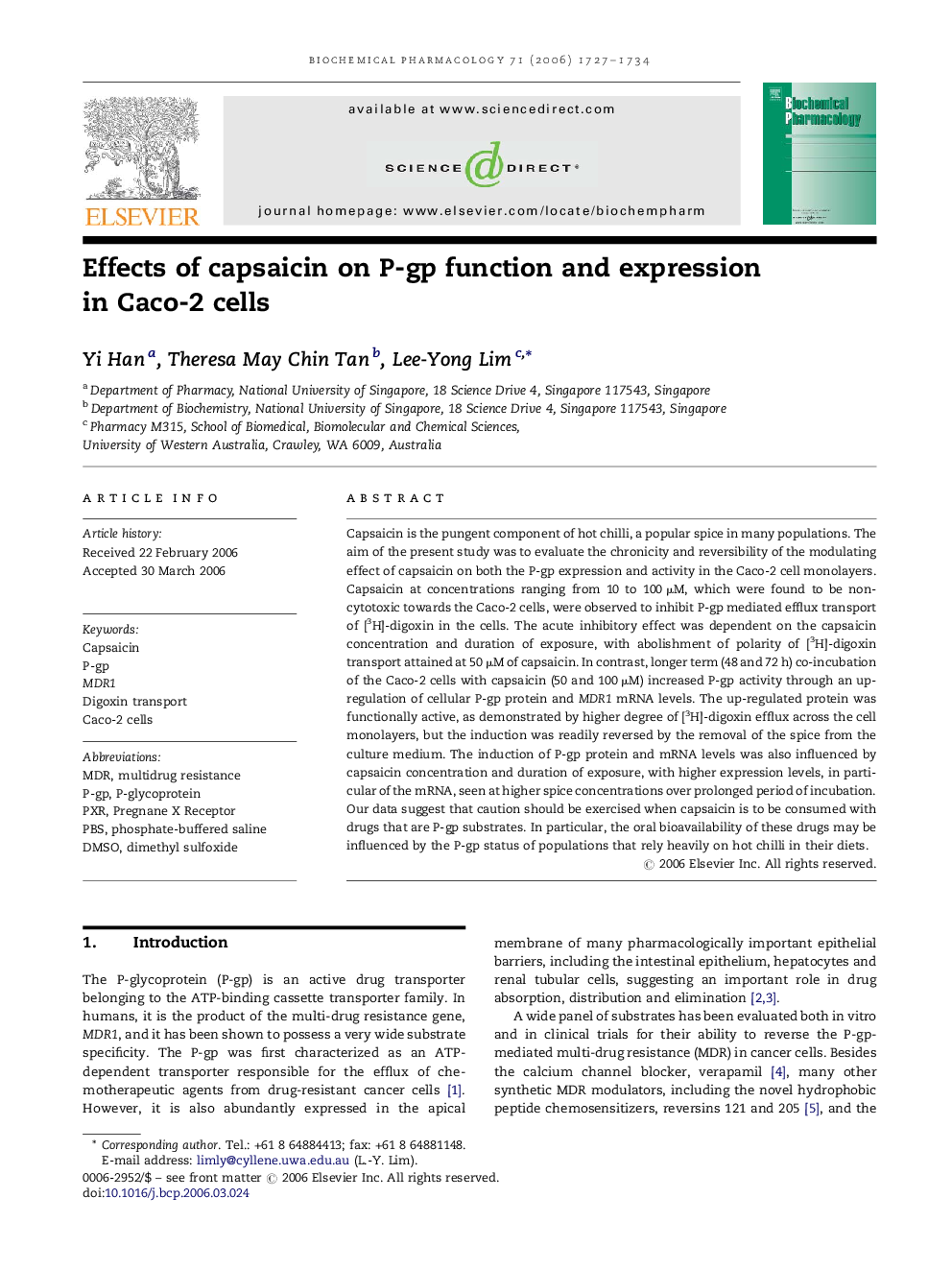| Article ID | Journal | Published Year | Pages | File Type |
|---|---|---|---|---|
| 2515197 | Biochemical Pharmacology | 2006 | 8 Pages |
Capsaicin is the pungent component of hot chilli, a popular spice in many populations. The aim of the present study was to evaluate the chronicity and reversibility of the modulating effect of capsaicin on both the P-gp expression and activity in the Caco-2 cell monolayers. Capsaicin at concentrations ranging from 10 to 100 μM, which were found to be non-cytotoxic towards the Caco-2 cells, were observed to inhibit P-gp mediated efflux transport of [3H]-digoxin in the cells. The acute inhibitory effect was dependent on the capsaicin concentration and duration of exposure, with abolishment of polarity of [3H]-digoxin transport attained at 50 μM of capsaicin. In contrast, longer term (48 and 72 h) co-incubation of the Caco-2 cells with capsaicin (50 and 100 μM) increased P-gp activity through an up-regulation of cellular P-gp protein and MDR1 mRNA levels. The up-regulated protein was functionally active, as demonstrated by higher degree of [3H]-digoxin efflux across the cell monolayers, but the induction was readily reversed by the removal of the spice from the culture medium. The induction of P-gp protein and mRNA levels was also influenced by capsaicin concentration and duration of exposure, with higher expression levels, in particular of the mRNA, seen at higher spice concentrations over prolonged period of incubation. Our data suggest that caution should be exercised when capsaicin is to be consumed with drugs that are P-gp substrates. In particular, the oral bioavailability of these drugs may be influenced by the P-gp status of populations that rely heavily on hot chilli in their diets.
